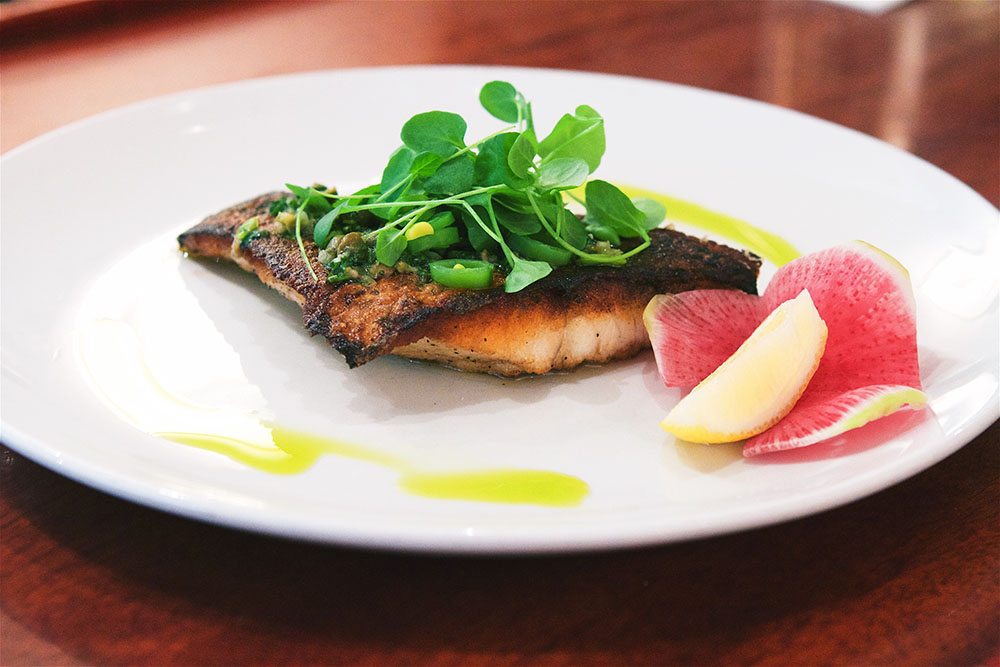5 Easy, Show-Stopping Sauces for Fish
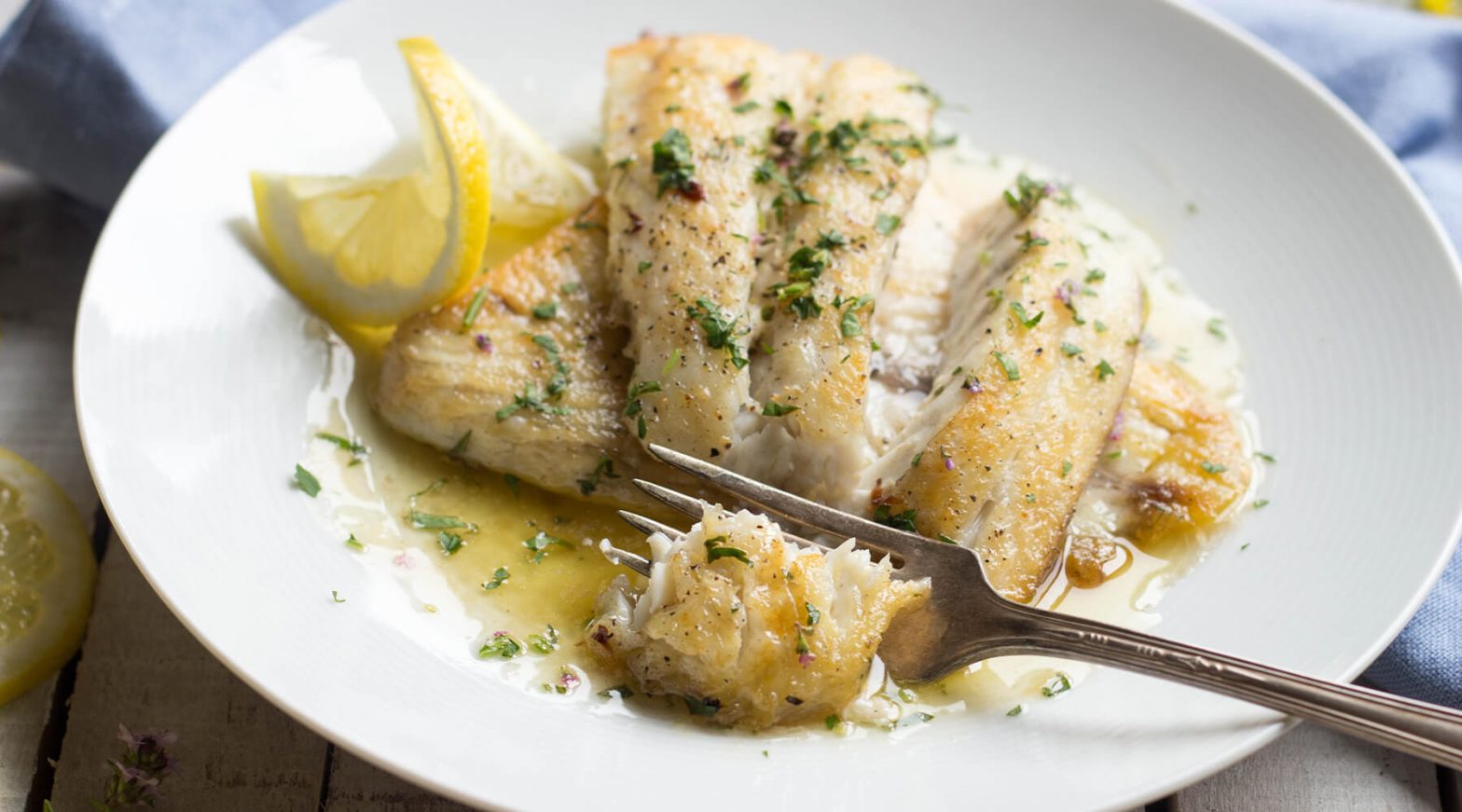
A dish is a sum of its parts, which means that every component needs to be high quality and flavorful for a successful end result.
When cooking fish, a well-done sauce can take it from ordinary to extraordinary. The right sauce can truly make any fish dish sing.
The key to any great sauce is the depth of flavor. In traditional French sauces, this depth is built over time. But unless you happen to be a master chef with ample amounts of time on your hands, chances are that this is not something you can pull off for a quick weeknight meal.
We’ve got two simple concepts that will make creating sauces for fish easy, fast, and fun.
First, focus on ingredients that have built-in depth and that will do the heavy lifting for you. Take harissa, for example, a North African paste that’s packed full of spices and lifts up any sauce. Similarly, a Thai curry paste is a concentrated powerhouse of flavor that lets you make a delicious sauce within minutes.
Second, familiarize yourself with texture compliments. Contrasting textures are key to a successful dish so that it doesn’t taste one dimensional in your mouth. For example, a meatier fish will do better with a lighter, smoother sauce rather than something that’s chunky. Choosing an oil-based sauce like a chimichurri gives the dish a silkier and smoother flavor while a chunky tomato sauce makes it taste heartier.
Got it? Let’s put the theory into practice.
Sauce It Up
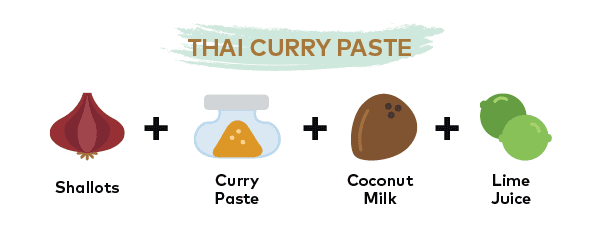
Thai Curry Paste
Thai curry pastes offer a slightly spicy flavor to Asian dishes that is balanced out by the sweetness of coconut milk. We recommend using unsweetened milk and either green or red curry paste (let personal preference guide you). This one-pot dish allows you to cook the fish in the sauce so that it absorbs the creamy, rich flavor and leaves you just one pan to clean. Add in vegetables like snow peas, mushrooms, or quick-cooking greens to round out the dish.
How to Do It: Sauté shallots or onions until soft in about two tablespoons oil. Add about two teaspoons curry paste for a mild dish (increase for stronger flavor) and then pour in one can of unsweetened coconut milk (roughly 14 oz). Adjust the heat to bring it to a simmer, season to taste with salt, pepper, and other condiments such as fish sauce or lime juice.
Add in the fish, for the last five to six minutes, until the fish is no longer opaque in the center (most delicate white fish will naturally break apart during the cooking process).
Serve with lime wedges and top with cilantro, bean sprouts, or sliced jalapeno peppers.
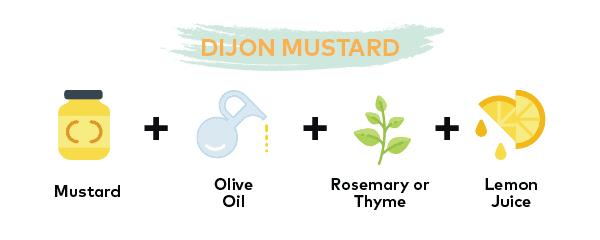
Dijon Mustard
Full of flavor and mild heat, Dijon mustard is the star ingredient to one of the easiest of sauces that can be made. Store it in the fridge for up to a week.
How to Do It: Whisk together two tablespoons mustard, two tablespoons olive oil, fresh chopped herbs like parsley, basil or rosemary, 2 tablespoons of fresh, squeezed lemon juice, and season with salt and pepper. Combine well and serve on the side or pour over the fish fillets when finished cooking. Top with fresh chopped herbs, if desired. Try this easy recipe from Martha Stewart.
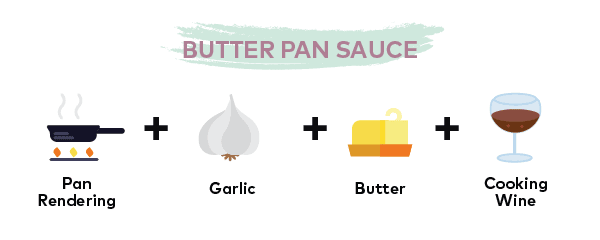
Butter Pan Sauces
Pan sauces have a simple formula that works well every time. The source of most of their flavor is the fond, or brown bits that stick to the pan after searing fish or meat. Using a stainless steel skillet is the best option as it will allow the brown bits to stick to the pan, which won’t happen as easily in a non-stick skillet. Also note that this process does happen rather quickly, so it’s a good idea to have a mise en place set with the different ingredients that you are using in your sauce. Cook’s Illustrated provides a more in-depth breakdown of the process.
How to Do It: Pan sear the fish, then remove and loosely cover to keep warm. Use the same pan, without wiping it out, add two tablespoons of oil or butter to the pan, then aromatics like a sliced shallot, minced garlic and/or chopped fresh herbs, followed by a liquid such as wine or broth. Scrape up the brown bits with a wooden spoon. Bring the liquid to a simmer so that it reduces from a loose liquid to a thicker, cohesive sauce. For, best results, finish it with a tablespoon of butter. And voila! It’s that easy.
Pour it over the fish or serve on the side. Finish with freshly ground black pepper and chopped fresh herbs like parsley or cilantro, if desired.
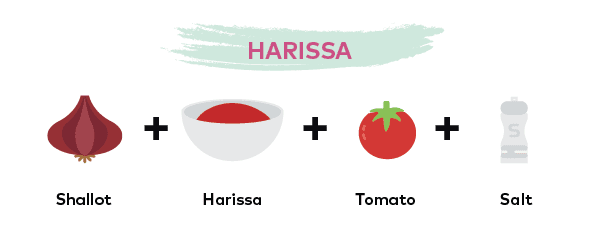
Harissa
A heat-filled condiment made with paprika, oil and chili peppers, harissa is a quick way to add a ton of flavor to any dish. It can be used as a marinade for meat or fish, used in the base of a tomato sauce, or mixed with yogurt to top roasted or grilled vegetables.
How to Do It: Heat two tablespoons of oil in a pan until shimmering, add in an aromatic such as a sliced shallot or onion, cooking with a pinch a salt until softened. Stir in the harissa until fragrant, about a minute, then add in a can of whole peeled tomatoes (about 28 oz), adjusting the heat to maintain a simmer. Use a wooden spoon to break apart the tomatoes, once softened, and season with salt and pepper, to taste. Cook until sauce has thickened, about 12 minutes.
For additional ways to use harissa with fish, check out this seabass recipe with harissa and this smoky tomato sauce made with harissa and grilled tomatoes.
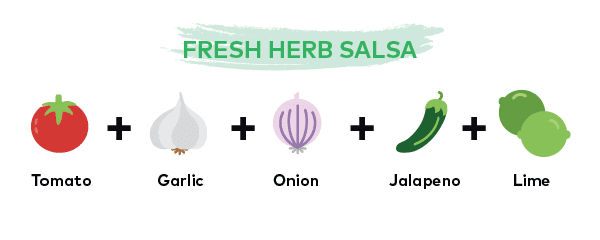
Fresh Herb Salsas
Any combination of onion, peppers with some type of juicy tomato or tomatillo, and fresh herbs is a tried-and-true method to create a lighter, bright sauce with serious flavor. Salsa verde, made with tomatillos, fresh chili peppers, cilantro, onion, and salt, is a fun variation on the traditional tomato-based salsa described below. Chimichurri, a tangy cousin to salsa verde that’s made with the addition of parsley, vinegar, and olive oil, is traditionally eaten with steak yet works wonderfully as a topping for white fish. Try this Italian salsa verde or this citrus salsa to brighten up your next dinner.
How to Do It: These ingredients can be chopped roughly by hand or thrown into a food processor. Keep in mind that you want to pulse the ingredients without fully combining them to create a chunky texture as some are not meant to be a puree. If you want a smooth and silky salsa verde, then blend away for a no-heat-required sauce. Combine roughly 2 cups chopped tomatoes with one to two cloves chopped garlic, ¼ chopped white onion, ½ cup freshly chopped cilantro, 1 minced jalapeno (seeds removed), 2 tablespoons of fresh-squeezed lime juice (plus more to taste) and season with salt as needed.
Note: If the sauce feels runny, you can use a slotted spoon to pour it over the fish to avoid adding excess liquid to it. Similarly, with a chunky salsa, you want to pulse the ingredients without pureeing them so that the texture remains. These can also be served with a slotted spoon to strain out the liquid.
Prep for Success
Plan Your Cooking Time
If the fish you’re using is frozen (like Australis Barramundi), then make sure to provide ample time to defrost before cooking it. Similarly, if your sauce requires no cooking time—as in the Dijon or salsa verde suggestions above—prep those ahead of making the fish so they are ready when the fish is done. Most sauces will last up to one week if stored properly in the fridge, preferably in an airtight container. Some sauces, like the pan sauces, will require you to make the sauce after the fish has been cooked, so it’s a good idea to have the ingredients prepped and ready to go so that your fish doesn’t get cold while you’re making the sauce.
(Find out how to properly defrost fish here.)
Season Your Fish
Season fillets well with salt and pepper on both sides before cooking to make sure it has flavor on its own which can be built upon. Ashley Fahr, the chef behind CookDrop Kitchen in Los Angeles recommends marinating fish in lemon zest and fresh chopped thyme (which you can do overnight) and then seasoning with salt and pepper before cooking for even more flavor. You can use this method as a base for fish when it aligns with the flavors and ingredients in your chosen sauce. For example, a Dijon or pan sauce would work well and the Thai curry paste sauce less so.
Serve It With Style
We recommend always serving fish with sliced lemon or lime and some freshly cracked black pepper. Fish tastes best as soon as it’s cooked, so it’s best to serve it (and eat it) right away. Have your table set, the bottle of wine opened, and the music playing before you sit down to eat. On a final note: It never hurts to have some crusty bread handy to soak up every last drop of that delicious sauce.
For more inspiration for how to use sauces when cooking fish, try one of these from recipes: Barramundi with Lemon-Caper Butter Sauce, Crispy Barramundi with Fish Vinaigrette, and Seared Barramundi with Beet Salsa.
